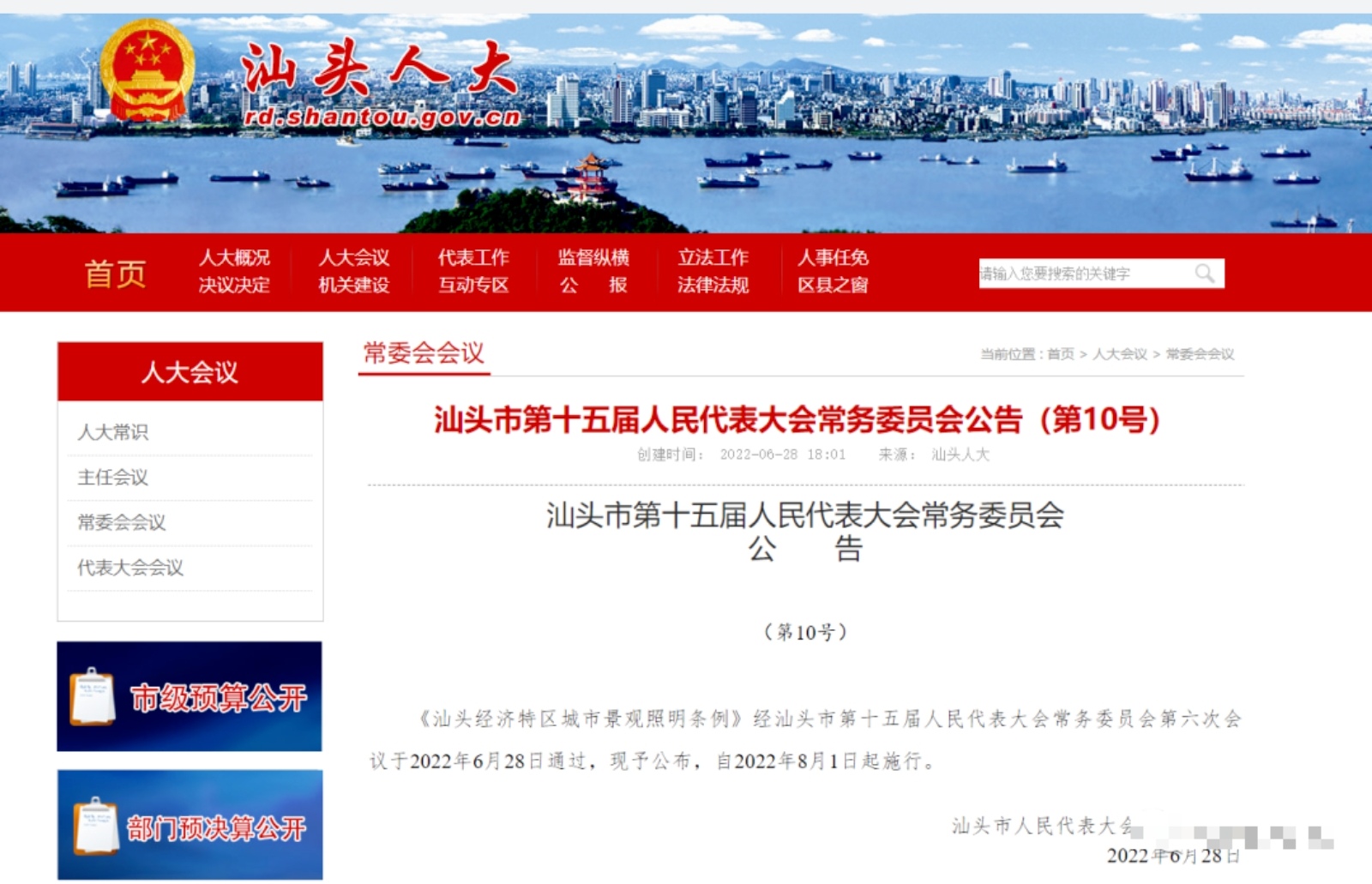
The Regulations encourage natural persons, legal persons and unincorporated organizations to invest in the construction, operation and maintenance of urban landscape lighting facilities in accordance with the landscape lighting plan, and encourage beautification and lighting of night scenes by means of internal transparent lighting.The light show shall be set up in accordance with the following requirements: Strictly control the site selection when it has a good view of the landscape and does not affect the surrounding residents, residents, traffic and ecological environment. transmitting the core values of socialism, disseminating the historical and cultural characteristics of the city, and highlighting the spirit of the SEZ; The opening and closing time is distinguished from the traditional landscape lighting, and the opening and closing time is strictly controlled; Other setting requirements specified by laws and regulations.The following requirements shall be met for the installation of landscape lighting in commercial streets: It combines with high-quality outdoor advertising facilities and signboard light boxes, adopts diversified and multi-dimensional lighting methods, and highlights the rich structure of buildings. It is integrated with the building of characteristic commercial streets, showing the prosperous image of economy and culture of the SEZ, reflecting the new vitality of "hundred-year commercial port" and "American overseas Chinese hometown"; Compliance with the permitted colored light sources for local buildings in commercial districts; Other setting requirements specified by laws and regulations.The installation of landscape lighting in residential areas shall meet the following requirements: meets the requirements of lighting brightness, luminous intensity and light pollution control and does not affect the normal life of residents; It is in harmony with the surrounding environment and conforms to the historical and cultural features of the Special Zone; Lighting facilities and residential building windows are relatively close, shading measures shall be taken, and no light shall directly illuminate the residential building windows; Other setting requirements specified by laws and regulations.Light pollution in residential areas should also be taken seriously. Light pollution is also common indoors, directly increasing the health risks of improper lighting. In addition to light intrusion from the outside world, more and more people's digital devices emit different types of light. Devices such as smartphones and laptops that emit blue light are common in homes, as are electric lights and dome lights that emit white light. Light emitting diodes (LEDs) are of particular interest, as the global market share for LEDs for lighting has increased from 5% to over 60% over the past decade and is expected to exceed 80% by 2025 (Gaffuri et al., 2021). At the same time, LEDs provide a narrow spectrum peaking at blue light (460-500 nm) (Helbich et al., 2020). By contrast, natural light is full spectrum and dynamic (see Figure).
The wavelength and intensity of natural light vary with time, providing timely light information for organisms. Therefore, how to maximize the intensity and spectrum of natural light without sacrificing the visual and biological needs of lighting becomes the challenge of designing artificial light. The residential light pollution standard formulated in China is that the lighting intensity in the nighttime lighting environment shall not exceed the specified maximum value, the color temperature shall not exceed 4000K, the chroma shall not exceed 0.5, and the spectrum shall not exceed the specified maximum value. In addition, it is also required that the light source of the lighting equipment should not emit blue light, so as not to affect the physiological rhythm of the human body. The implementation of the "Light Pollution Identification Standard" helps to improve the night lighting environment, reduce light pollution, protect people's vision and sleep, and improve social efficiency.